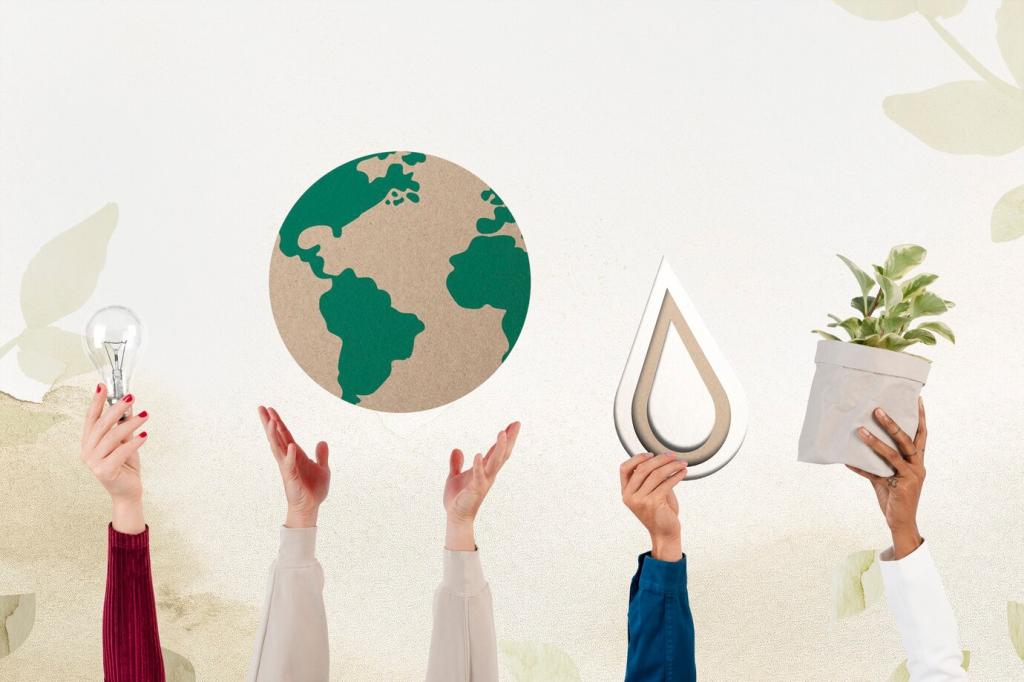
Digital Printing for Sustainable Packaging Design
Digital printing is revolutionizing the packaging industry by offering a sustainable alternative to traditional production methods. As brands and consumers alike place greater emphasis on environmental responsibility, digital printing is emerging as a vital tool for designing packaging that minimizes waste, maximizes efficiency, and supports eco-friendly initiatives. Through innovative technologies, brands can create packaging solutions that are not only attractive and functional but also gentle on the planet. This approach aligns with contemporary expectations for ethical production and offers unique opportunities for customization, rapid prototyping, and reduced environmental impact.
The Role of Digital Printing in Sustainable Packaging
A key advantage of digital printing for sustainable packaging is its ability to drastically reduce material waste during production. Traditional print methods often generate substantial excess through overproduction and setup processes. Digital printing, by contrast, is an on-demand technology. It enables brands to produce exactly what is needed, minimizing overruns and surplus inventory. This efficiency cuts down not only on wasted substrate materials but also associated energy and transportation emissions, since fewer resources are expended throughout the supply chain. As sustainability gains importance, brands adopting digital printing improve their environmental performance without sacrificing quality or creativity.
Digital printing transforms packaging production with its streamlined, plate-free process. Unlike offset or flexographic printing, digital methods eliminate the need for extensive physical setup and changeovers. This not only saves time but also conserves the raw materials typically lost during make-ready stages. The ability to quickly switch between designs or make last-minute adjustments empowers brands to remain agile and responsive to market trends, further enhancing efficiency. By reducing setup waste and enabling short runs, digital printing helps companies meet evolving packaging demands while maintaining a low ecological footprint.
Just-in-time manufacturing has become essential for sustainable operations, and digital printing is the cornerstone of this shift in packaging design. The ability to produce only what is needed at any given moment reduces obsolete inventory and erases the need for warehousing surplus stock. This approach is especially important for sustainability-minded brands seeking to avoid wasteful practices associated with overproduction. Digital printing enables manufacturers to quickly respond to changes in demand, minimize storage costs, and ensure that every item produced has a definite purpose, all of which contribute to a more sustainable supply chain.

Eco-Friendly Ink and Substrate Options
Water-Based and UV-Curable Inks
One of the leading innovations in digital printing for sustainability is the use of water-based and UV-curable inks. These inks are formulated with either minimal or zero volatile organic compounds (VOCs), meaning they do not emit harmful substances during curing. Water-based inks are especially attractive for food packaging applications, where safety is paramount. UV-curable inks offer quick drying times and are extremely durable, contributing to reduced energy consumption and improved print quality. By choosing these advanced ink types, brands can ensure their packaging contributes positively to both consumer safety and environmental stewardship.
Compatibility with Recyclable and Compostable Materials
Digital printing is highly compatible with a diverse range of eco-friendly substrates, including recyclable papers, biodegradable films, and compostable boards. Unlike traditional methods that often require chemically-treated surfaces for accurate image transfer, digital printing excels on natural and untreated materials. This versatility supports closed-loop recycling and composability, promoting a lifecycle approach to packaging design. Brands can leverage digital printing to create packaging that not only looks appealing but also returns safely to the environment, supporting broader sustainability goals.
Minimizing Harmful Byproducts
Traditional printing processes often produce hazardous byproducts such as chemical runoff, waste solvents, and excess inks, which can be damaging to the environment. Digital printing mitigates these negative effects by utilizing cleaner technologies and generating significantly fewer waste materials. The elimination of chemical processing steps and the precise application of inks further reduce the risk of harmful substances entering the ecosystem. By adopting digital printing for packaging, companies make tangible progress in lowering their environmental impact, reinforcing their commitment to sustainable business practices.
Customization and Consumer Engagement
One of the greatest strengths of digital printing is its capacity for cost-effective personalization. Brands can produce packaging with unique designs, individualized messages, or localized artwork without the logistical barriers posed by traditional printing methods. This one-to-one customization helps companies foster stronger connections with their customers, tailoring sustainability messaging to specific regions or demographics. By deploying personalized packaging, brands reinforce their environmental commitments and invite consumers to participate in their sustainability journey, resulting in higher engagement and loyalty.

